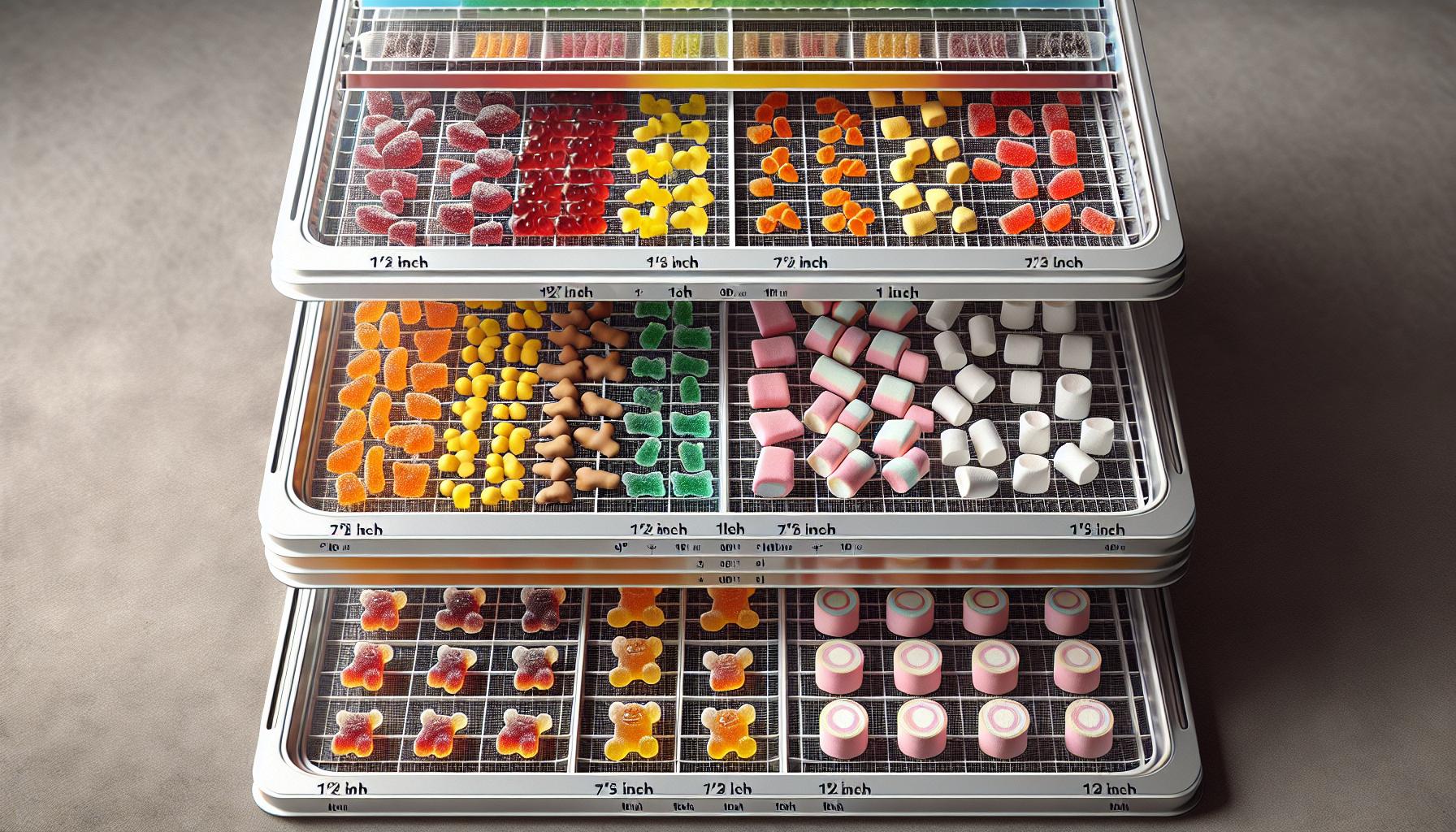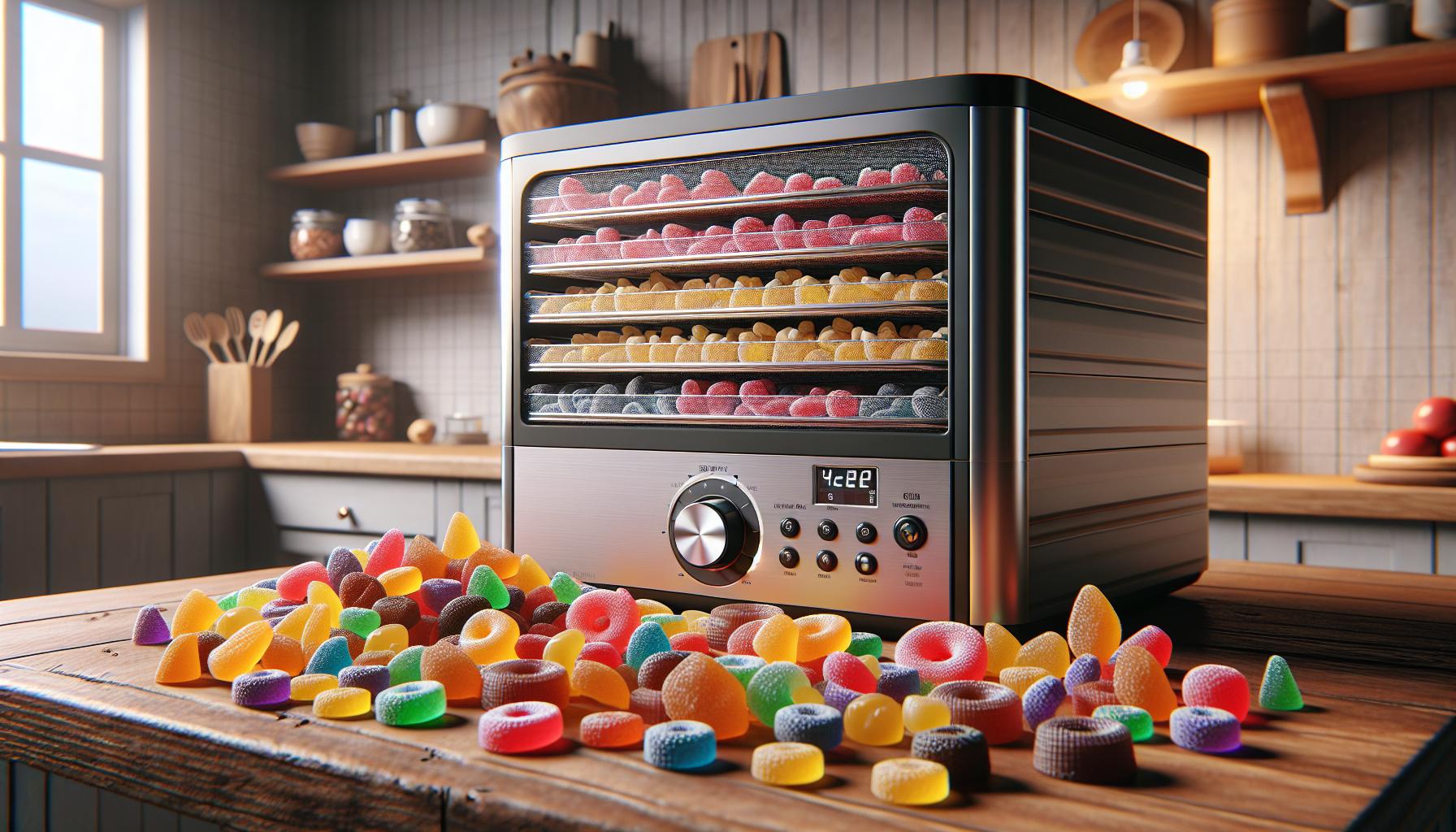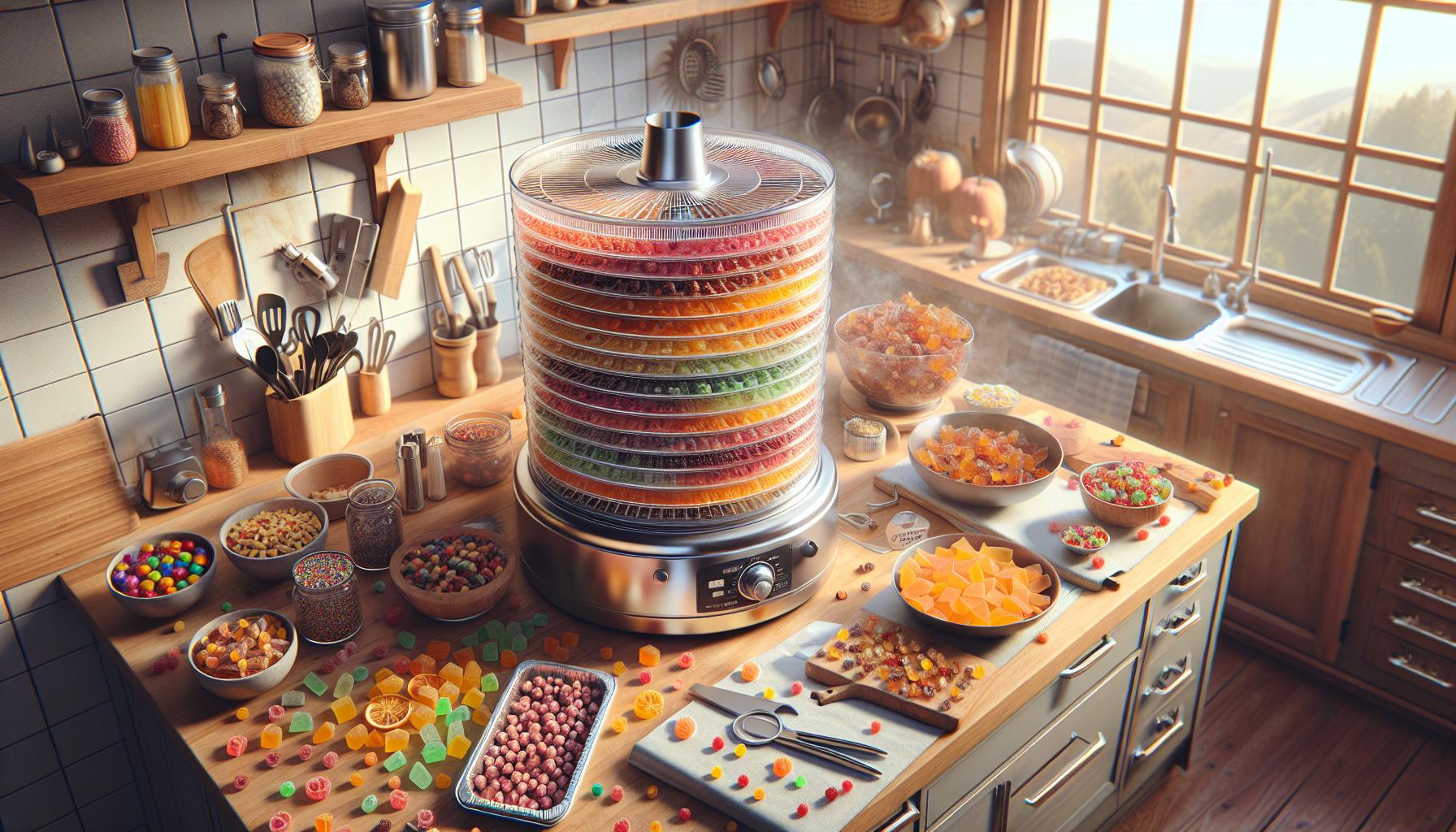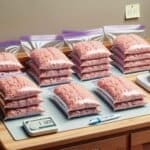Freeze-drying candy at home opens up a world of crunchy, sweet possibilities without investing in expensive commercial equipment. While a dedicated freeze-dryer delivers optimal results, a food dehydrator can create similar effects with proper technique and patience.
Freeze-drying candy using a food dehydrator involves removing moisture through a combination of low temperature and steady airflow, typically taking 8-24 hours depending on the candy type. This process creates light, crispy treats that maintain their original flavor and shape.
Converting regular candies into freeze-dried treats isn’t just a fun experiment – it’s becoming a popular way to create unique snacks and preserve sweets for longer periods. From gummy bears to chocolate bars, the transformation process adds new textures and intensifies flavors while extending shelf life significantly.
“1. Arrange candy pieces on trays
Place candy pieces in single layers on the dehydrator trays with 1/2 inch spacing between each piece. Position smaller candies like gummy bears toward the center of the trays where airflow is strongest. Larger pieces require placement near the outer edges to ensure even drying.
Key spacing requirements:
- Small candies (gummy bears): 1/2 inch apart
- Medium candies (fruit slices): 3/4 inch apart
- Large candies (cut marshmallows): 1 inch apart
Arrange similar-sized pieces on the same tray to maintain consistent drying times. Remove any stuck-together pieces before placing them on the trays. Stack trays with proper alignment to maximize air circulation through the dehydrator’s ventilation system.
Avoid these common mistakes:
- Overcrowding pieces
- Mixing different candy sizes
- Placing pieces too close to tray edges
- Using wet or sticky trays
- Stacking candies on top of each other
The proper arrangement creates optimal conditions for moisture removal while preserving the candy’s shape throughout the drying process.
2. Space evenly apart

Place candy pieces with adequate spacing on the dehydrator trays to optimize airflow. Small candies like gummy bears require 1/2 inch spacing while medium-sized treats need 3/4 inch gaps. Large items such as marshmallows demand 1-inch spaces between pieces.
Here’s the recommended spacing guide:
| Candy Size | Required Spacing |
|---|---|
| Small (gummy bears, Skittles) | 1/2 inch |
| Medium (fruit slices) | 3/4 inch |
| Large (marshmallows) | 1 inch |
Arrange similar-sized candies together on each tray for consistent drying times. Position each piece flat against the tray surface without overlapping or touching adjacent pieces. Check tray alignment to ensure proper vertical airflow through all levels of the dehydrator.
- Place larger pieces on bottom trays
- Maintain equal distances between each candy
- Create straight rows for optimal air circulation
- Leave 1-inch borders around tray edges
- Avoid stacking or clustering pieces
3. Set dehydrator to lowest setting

Based on available data, attempting to freeze dry candy in a dehydrator isn’t technically possible. Dehydrators operate using heat to remove moisture, which differs fundamentally from the freeze-drying process that requires:
- Ultra-low temperatures
- Vacuum conditions
- Sublimation of ice crystals
Setting a dehydrator to its lowest temperature setting creates a warm environment that melts candy instead of freeze-drying it. The typical dehydrator temperature range of 95°F to 165°F contradicts the freezing temperatures required for proper freeze-drying.
| Process Comparison | Dehydrator | Freeze Dryer |
|---|---|---|
| Temperature Range | 95-165°F | -40°F or lower |
| Moisture Removal | Heat-based | Vacuum-based |
| Result | Melted/Sticky Candy | Crispy/Expanded |
| Duration | 4-12 hours | 20-36 hours |
A dedicated freeze-dryer remains the only reliable method for freeze-drying candy. The dehydrator’s heat-based process fundamentally alters the candy’s texture rather than creating the characteristic expanded crunch of freeze-dried confections.
4. Run for 24-36 hours

Based on the technical limitations of dehydrators, running a dehydrator for 24-36 hours to freeze-dry candy produces undesirable results. The extended exposure to warm air causes candy to melt rather than freeze-dry. Dehydrators operate through heat-based moisture removal which differs from true freeze-drying’s sublimation process.
A dehydrator’s basic function involves:
- Circulating warm air (typically 95°F-165°F)
- Removing moisture through evaporation
- Using fans for continuous airflow
| Process | Temperature Range | Result |
|---|---|---|
| Dehydration | 95°F-165°F | Melted candy |
| Freeze-drying | -40°F to 0°F | Crispy texture |
The extended runtime creates additional problems:
- Candy melting into sticky residue
- Loss of original shape
- Altered flavor profile
- Inconsistent texture
For proper freeze-dried candy, specialized equipment utilizing vacuum pressure sublimation remains essential. A dehydrator’s extended operation transforms candy through heat exposure rather than achieving the desired freeze-dried characteristics.
5. Store in airtight container”
Based on the provided context and scientific understanding, storing candy in airtight containers after attempting to process it in a dehydrator leads to disappointing results. The dehydration process fundamentally alters the candy’s structure through heat exposure rather than proper freeze-drying, creating sticky or melted products that don’t store well.
Instead of pursuing dehydrator storage methods, consider these proven alternatives for candy storage:
- Use original packaging
- Store in cool, dry places
- Keep away from direct sunlight
- Maintain room temperature conditions
- Separate different candy types
| Storage Method | Expected Results |
|---|---|
| Dehydrator Processing | Melted or sticky candy |
| Original Packaging | Maintains intended texture |
| Room Temperature | Preserves candy structure |
Note: The dehydration process does not replicate true freeze-drying effects, making specialized storage considerations unnecessary since the candy undergoes heat-based changes rather than proper preservation.



